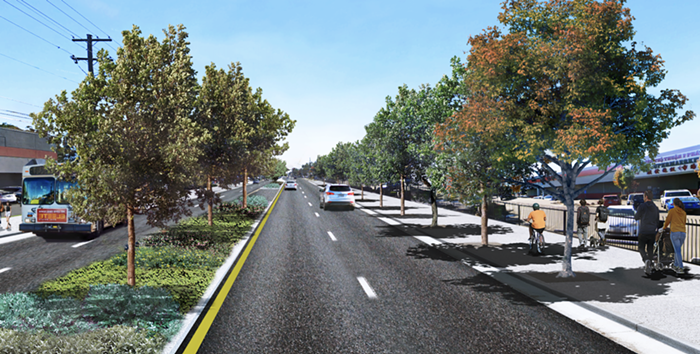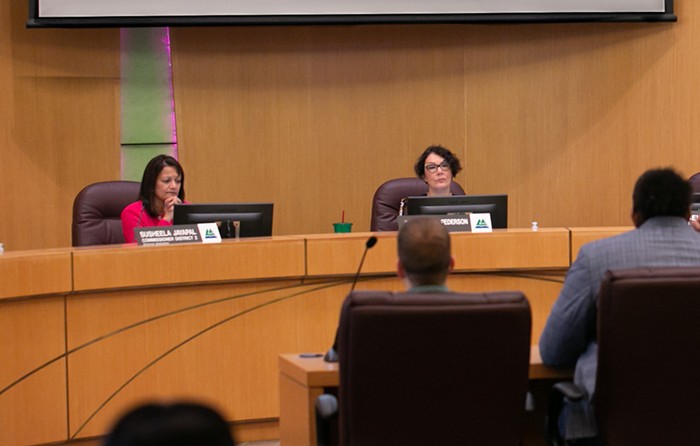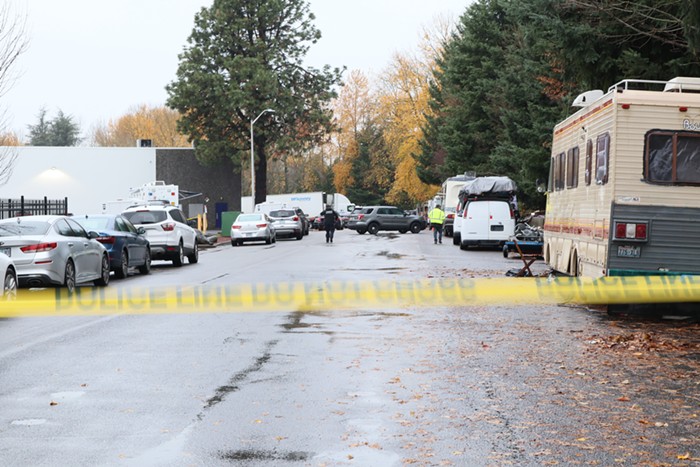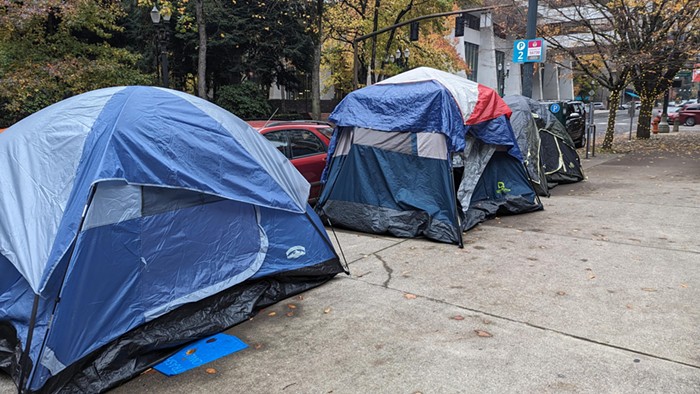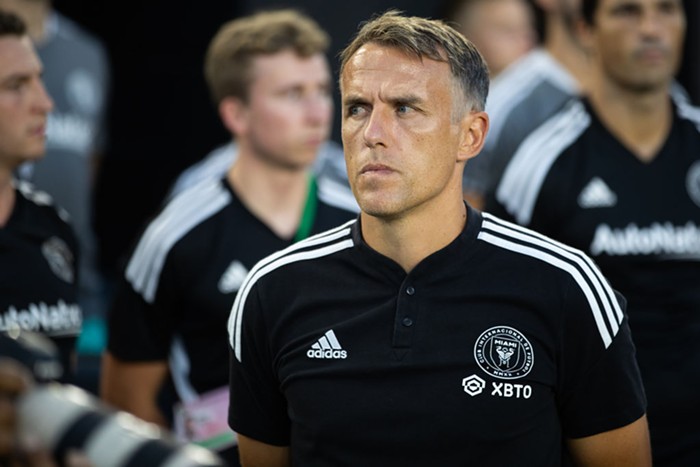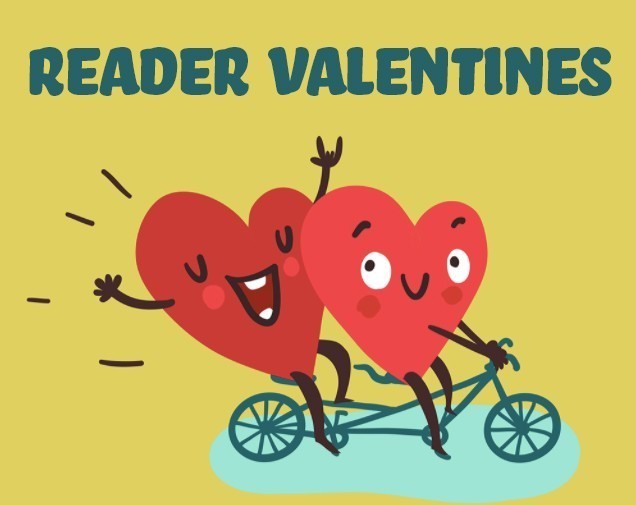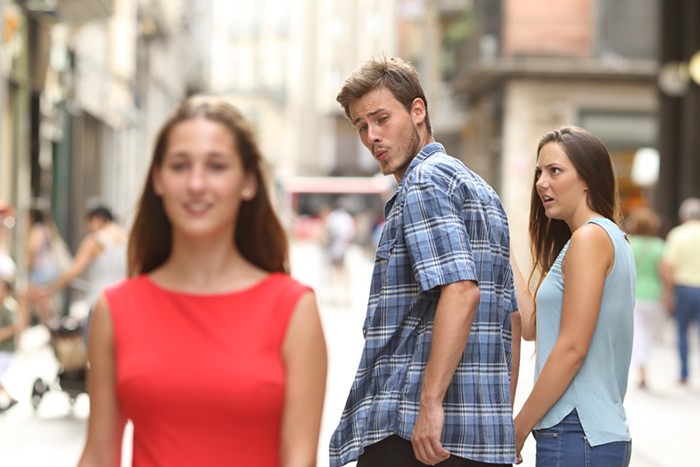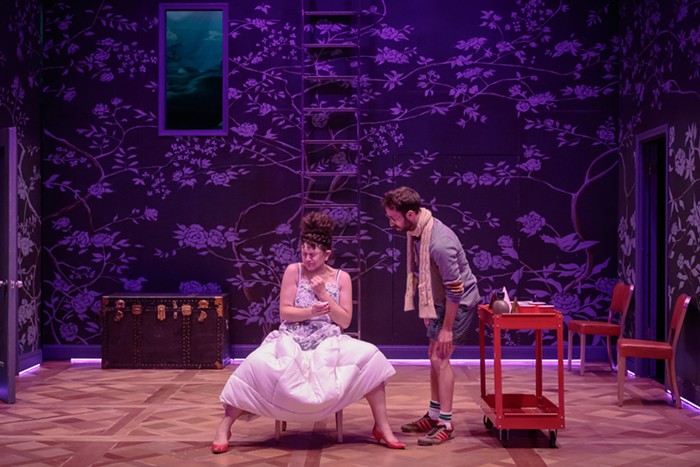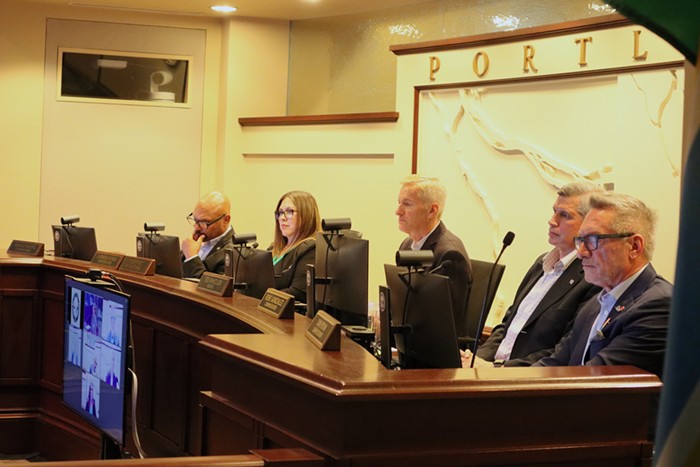THE PROTESTER was standing motionless on SW Yamhill and Broadway last Friday when he was bombarded with “pepper ball” shots from gas mask-clad riot police lined up about 20 yards away.
Seconds earlier, police had tossed flash-bang grenades a few feet from him. Moments later, they would release tear gas on the nonviolent crowd of protesters and journalists.
“This one, my sheets got bloodied because of it,” the protester, a white thirtysomething who didn’t want to be named, told the Mercury three days later, lifting up his pant leg to reveal a deep gash on his right shin in a circle of black and blue, a few inches from another large bruise. He raised his other pant leg: “This one’s kind of messy, too. You can see where it hit but the spread is much more significant.”

- Shooting off rounds
- Doug Brown
The protester, who reached out to the Mercury after seeing footage of himself being shot, is one of an untold number injured in what activists say was an unnecessary show of force on January 20, the day Donald Trump took office.
That evening, the Portland Police Bureau (PPB), perhaps fearful of a potential repeat of post-election vandalism in the Pearl District, cracked down hard after protesters took to the streets for a large, unpermitted march. The bureau even brought in reinforcements from the Multnomah County Sheriff’s Office, the Oregon State Police, the Salem Police Department, and the Clark County Sheriff’s Office.
Mayor Ted Wheeler, who monitored the protest from the Portland Bureau of Emergency Management outpost in Southeast Portland, and got updates from PPB sources, has since stood by the use of force. He said Monday that “early indications” of the cops’ use of tear gas, pepper spray, flash-bang grenades, and less-lethal rounds on the protesters “was appropriate.”
Many of those who were present disagree.
In all, the protester the Mercury spoke to was hit more than a dozen times by police rounds—three times below the knee, four times on his thighs, two around his crotch, and a handful of times on his torso and right arm.
But it’s what he describes as a shot to the face that concerns him most. The protester was wearing a helmet and a gas mask, which deadened the impact, but says, “I’m worried the force they used against me very well could have killed somebody else.”
Earlier in the night, hundreds gathered in Pioneer Courthouse Square for speeches, then began a march. Police blocked the planned route, forcefully shepherding the crowd through the downtown streets and back to the square after a number of brief standoffs (including use of pepper spray) with protesters on SW Naito and again on SW Taylor.

- Gabriel Green
Still, the march was largely peaceful until around 8 pm, when a few dozen protesters tried to leave the square to march down SW Yamhill. Squads of riot cops marched them back, shot “pepper balls” and other rounds, and set off explosive “stingball grenades” full of rubber pellets. Then the tear gas came.

- Doug Brown
On Twitter, police explained the force by saying protesters were throwing objects and “unknown liquid” at officers and that they used “incendiary devices against police and buildings.” Just five people were arrested that night for disorderly conduct, including one man who’d been lying down in the street, according to a probable cause affidavit.
Another, Matthew McGaugh, was arrested after standing with his back to police, with his hands in the air in peace signs, while he and his fiancée were pelted with less-lethal rounds. McGaugh said on Facebook police broke his ribs as they were taking him in and then released him at the station as they learned the arrest was filmed. He says he was downtown to celebrate his anniversary with his fiancée, and wasn’t part of the protest group.

- Matthew McGaugh, with his hands in the air, was shot with less-lethal rounds a number of times and arrested for disorderly conduct.
- Doug Brown
Dawn Bankson, a tourist from Washington in town to celebrate her son’s birthday, was shoved to the ground by police in the chaos. She was staying at the nearby Hotel Monaco and when “the police started coming, I asked them, ‘What’s going on?’” she told the Mercury that night. “Instead of answering me, they took their gun, or whatever it was, and they pushed me down on the ground. I landed on my lip, I lost my glasses—I don’t even know where my glasses are. I got up and they pushed me down again... They wouldn’t give me their names, they told me to get out of here.”
Riot cops knocked down a tourist, who lost her glasses. Didn’t apologize pic.twitter.com/LgrG834Q6E
— doug brown (@dougbrown8) January 21, 2017
The Independent Police Review—a police watchdog unit in the auditor’s office—said it received 10 complaints and 12 commendations about PPB employees over the weekend (it’s not clear how many commendations came as a result of Saturday’s permitted Women’s March).
The PPB’s response led a number of local activists to demand that Wheeler oust PPB Chief Mike Marshman by Tuesday night or face protests starting Wednesday.
Gregory McKelvey, a main organizer for the group Portland’s Resistance, is calling foul on Wheeler and the PPB. He didn’t seek a permit from the city (“an extortion fee to be able to use the First Amendment”) but tells the Mercury he met on Thursday night with Wheeler, Marshman, and some of their staff at City Hall ahead of the next day’s long-planned protest. McKelvey says Wheeler implied protesters would be given a “hands off” approach by the police and they’d be able to march over a bridge to the east side if they didn’t block any freeway, didn’t intentionally block public transit, and if there wasn’t any violence or vandalism (he made similar suggestions to reporters the day before).
But McKelvey says he got a call on Friday afternoon, just an hour before taking to the streets, from PPB Captain Mike Crebs saying the plan discussed the night before with Wheeler was off. Protesters couldn’t march to the east side, and the police would corral them back to Pioneer Courthouse Square when they took the streets.

- Gregory McKelvey
- Doug Brown

- Protesters marching through downtown
- Doug Brown
While Wheeler called the police response on Friday night “highly successful” and “appropriate,” ACLU of Oregon Legal Director Mat dos Santos says the police’s use of “crowd control devices” on nonviolent protesters was unnecessary and potentially unconstitutional. Dos Santos and eight ACLU legal observers monitored the protest.
“We should be very careful about condoning police using less-lethal weapons,” he says. “While it may not completely turn away the most steeled protesters, a lot of the folks who would like to go there and protest events like Inauguration Day might be afraid to because of the police response they witnessed. It chills speech. This notion that they’re acting in the concern of public safety is incomplete.”

- Protesters risked arrest by sitting in the street
- Doug Brown
Roughly 15 hours after police tear gassed and fired less-lethal rounds at nonviolent protesters in downtown Portland, PPB officers had swapped gas masks for pink “pussy hats,” posing for pictures as tens of thousands of people gathered at the Women’s March on Portland, which had a permit from the city.
The PPB tweeted a photo of officers posing with two of the Women’s March organizers, writing: “Credit to them for planning and collaboration on a successful march.”
“They’re basking in the glory of the Women’s March,” McKelvey says of the PPB. “They want to make sure that the Women’s March remains the story and make us look like bad protesters so that whenever we protest they can say, ‘Look how you were supposed to do it.’”
One of the Women’s March organizers, Margaret Jacobson, agrees.
“There’s been such an emphasis on us having permits,” she wrote on Facebook. “They kept saying it’s for everyone’s safety, and it was odd to have to basically BUY safety for our marchers. It was odd that the night before the policemen who were ‘keeping us safe’ attacked protesters because they were protesting without a permit. It doesn’t make sense to me that we have to PAY to protest and demand liberation. It doesn’t feel like liberation, and it definitely doesn’t feel like a revolution.”
***

- Gabriel Green

- Gabriel Green

- Gabriel Green

- A few protesters burned American flags in Pioneer Courthouse Square.
- Doug Brown

- A hate-spewing pro-Trump preacher got doused with red paint
- Doug Brown

- Riot cops from the Clark County (WA) Sheriff's Office
- Doug Brown

- Portland's Resistance leader Gregory McKelvey leading the march
- Doug Brown

- Gregory McKelvey
- Doug Brown

- Protesters marching through downtown
- Doug Brown

- Police blocked the Morrison Bridge
- Doug Brown

- Doug Brown

- Blocking the Morrison bridge
- Doug Brown

- Marching on Naito
- Doug Brown

- Doug Brown

- Police blocking a downtown street
- Doug Brown

- Protesters risked arrest by sitting in the street
- Doug Brown

- Protesters were upset by the heavy-handed police response
- Doug Brown

- Calling out the cops
- Doug Brown

- Doug Brown

- In the midst of firing off less-lethal rounds at protesters and setting off tear gas on Yamhill
- Doug Brown

- Matthew McGaugh, with his hands in the air, was shot with less-lethal rounds a number of times and arrested for disorderly conduct.
- Doug Brown

- Shooting off rounds
- Doug Brown

- Doug Brown

- Doug Brown

- Gabriel Green

- Gabriel Green

- Tear gas on Yamhill
- Doug Brown

- Tear gas
- Doug Brown
